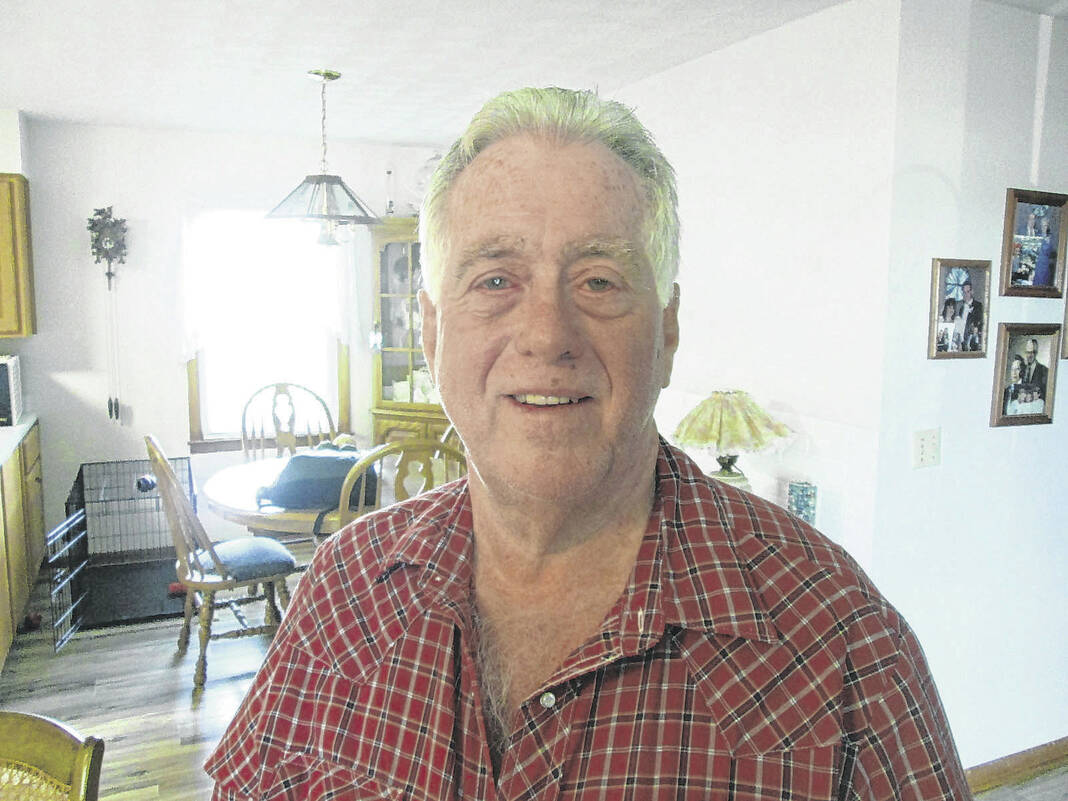
Rich Creason
Many years ago, (actually, many decades ago), our daughter, Angi started her 4-H career.
She continued in it for the 10 years allowed at that time.
She began with numerous projects, including cooking, maybe sewing, and a couple other indoor projects.
She was also entered in almost every outdoor project offered. This included wildlife, tree identification, entomology (insects), weeds and more.
As she got older, she expanded her interests.
She began showing rabbits, continued her entomology, added tree and shrub herbariums, and others.
She collected many ribbons — blues, honors, champions, reserve Grand Champion, and finally Grand Champions in weeds, herbariums, several posters, and especially her insect collection.
Many of her projects were picked to go on to the Indiana State Fair.
We had to go to the fairgrounds every day during judging to take care of her rabbits. She enjoyed showing her rabbits at the 4-H fair and she began taking her rabbits to various rabbit shows around the state.
At one time, she was raising 50 show rabbits, mostly dwarf Netherlands with a few mini-lops. She ended with several Grand Champion rabbits.
When we went to the State Fair, we always walked through the 4-H exhibit hall to see all of the projects on display.
We also visited many different county fairs to observe their displays.
We checked out all of the higher award winners to see if they had any special qualities we could use in Angi’s projects to improve them.
As the year’s progressed, her insect collection had to increase by at least 25 new insects each year. The judging score sheet awarded one point for each different insect order in the collection.
The judges had to give her 28 points because she had three orders that did not appear on the sheet.
Two were insects collected in Indiana but were not supposed to be here and one was from Florida. Two were so small the judge had to observe them under a magnifying glass to identify the specimen, and one actually had to be looked at under a microscope to prove it was in the tiny vial on display.
Appearance was judged, so we changed the backing material a couple times.
Tiny labels containing information on name, locations found, date and more were fastened to insects with a long pin that went through the insect, the label, then down into the Styrofoam material lining the display box. The judge also observed each specimen to confirm it had two antennae, and six legs.
We would often catch several insects of the same species. If a leg or antenna came off while mounting in the case, Angi would take that part from the spare insect and glue it on to the damaged one.
The final step before putting on for judging was to clean the glass cover on the display box. Points were deducted from the total for any mistake in identification, labeling, etc.
Because of the delicate nature of the display, we moved them ourselves to the State Fair rather than having the Extension agent take them with other exhibits.
The first year of her collection had only 10 different insects.
The last four years had six to 10 collection boxes, including educational boxes, and ended with well over 500 insects.
One box was entirely butterflies and moths — with wings properly spread; another was only dragonflies and damselflies, while a third was full of assorted beetles. Each of these had to be properly identified or points were deducted from her total.
Three months every spring and early summer, our kitchen table was full of insects in varying stages of readiness.
All of this work finally paid off.
After many years of Grand Champion Entomology collection at the Madison County Fair, her collection earned Sweepstakes at the State Fair.
That means it was the best insect collection in the state that year.
Our grandson, Benjamin, also joined 4-H when he was young.
Unfortunately, he lives in Fort Wayne and we weren’t close enough to follow his collection closely.
And, his collection was not insects, but Civil War relics.
He had buttons, buckles and other artifacts from that conflict and the years surrounding it.
He had coins and paper money from the 1860s, a cannonball, artillery shell, and an entire Confederate Enfield rifle found with a metal detector.
The rifle was complete except for the wooden stock, which had rotted away after laying in the ground for 150 years.
His collection totaled more than 500 pieces, including a notebook that identified each piece and where he acquired it.
It was awarded Grand Champion collection at the Fort Wayne 4-H fair two years in a row. For whatever reason, the collections from this fair were not allowed to exhibit at the State Fair.
We finally got to see the entire collection when we went to Fort Wayne recently to pick up his project after the fair ended while he was on vacation.
With this being his final year in 4-H, I guess that means Susie and I are done also.
Unless someone local would like us to help with a 4-H entomology collection.
We have a lot of experience, two book shelves full of insect identification books, labels, pins and probably some butterfly nets.
Rich Creason is an award-winning outdoors and travel writer whose work has appeared in local, regional, national and international publications for 40 years. Born in Anderson, he is a graduate of Markleville High School. He lives in South Madison County with his wife, Susie. He may be contacted at [email protected].